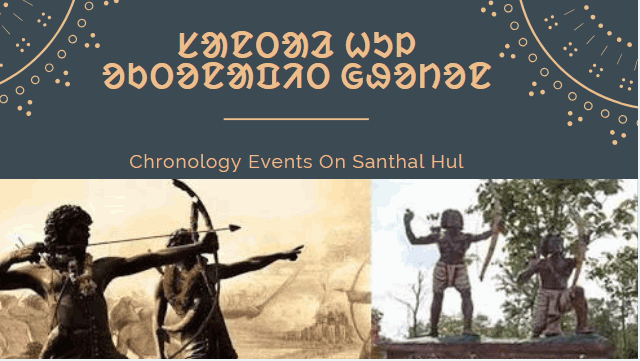Death is the final stage in the life-cycle of a Santhal. However Santals do not believe it to be the end of the social person, but death to them is a stage of transformation.
Traditionally, Santals believe in two worlds - Noapuri (this visible world) and Hanapuri (world after death). Death is the bridge leading to Hanapuri. Santals believe that after death, the departed joins his ancestors and is transformed into Hapram Bonga (ancestors sprit).
Their belief in Hanapuri and the transformation into Hapram Bonga can be easily gauged from the terms usually used for their dead ones like - Bonga talaenae (he has become one with the spirit) or 'nitok' doe hapramena (now he has become sprit).
The Santals further believe that good people would be rewarded and the wicked punished in the Hanapuri - thus they believe in jom raja and hudur raja awaiting the wicked ones in Hanapuri to punish them.
According to traditional beliefs, the departed ones cannot join their ancestral spirits (bongas) in Hanapuri unless certain death ceremonies and rituals are accomplished. Santals believe that death pollutes the household of the deceased and also the village; thus the baihar bongas and the jaher bongas are polluted; this is so because death is a victory of malignant ones over the benevolent bongas concerned with the well being of the individuals and the village.
Hence, no social ceremonies like marriages or agricultural festivals like Baha, Sohray can be performed unless purificatory ceremonies have been performed.
The Mourning and Burial
The death of a person in a household is an occasion of mourning; the news of the death is passed on to the villagers by the godet. The dead body is prepared for burial by dressing it in new clothes and putting it on a stringed cot (parkom) which is brought to the courtyard.A plate and drinking vessel made of brass are placed on the cot. Some money tied in a piece of cloth along with other gifts is given by the relatives as the token of mourning. The body is also anointed with oil and turmeric.
source: kalingatv
The body thus prepared is then taken to the burial place in the outskirts of the village; the grave is usually dug in a North-South direction. On reaching the grave all the gift items along with the brass vessels and money are removed; they are later used for procuring Handi - Paura (rice beer and liquor).
A piece of cloth is then laid inside the grave, the body is taken round three times around the grave and then a glowings ember is put inside the mouth of the body by the chief mourner. Then the body is lowered inside the grave with the head facing south.
A canopy of branches is made over the body and the cot is then broken with the bamboos placed over the canopy. The chief mourner puts the first soil inside the grave followed by other relatives until the grave is filled by soil.
A winnowing fan with some paddy is left behind. The villagers then go for a purificatory bath and then they anoint themselves with Sunum Sasan. The chief mourner head is totally shaved. Then they return to the village.
source:kalingatv
Thank You for reading. Stay connected for more knowledgable articles. Johar.





0 Comments